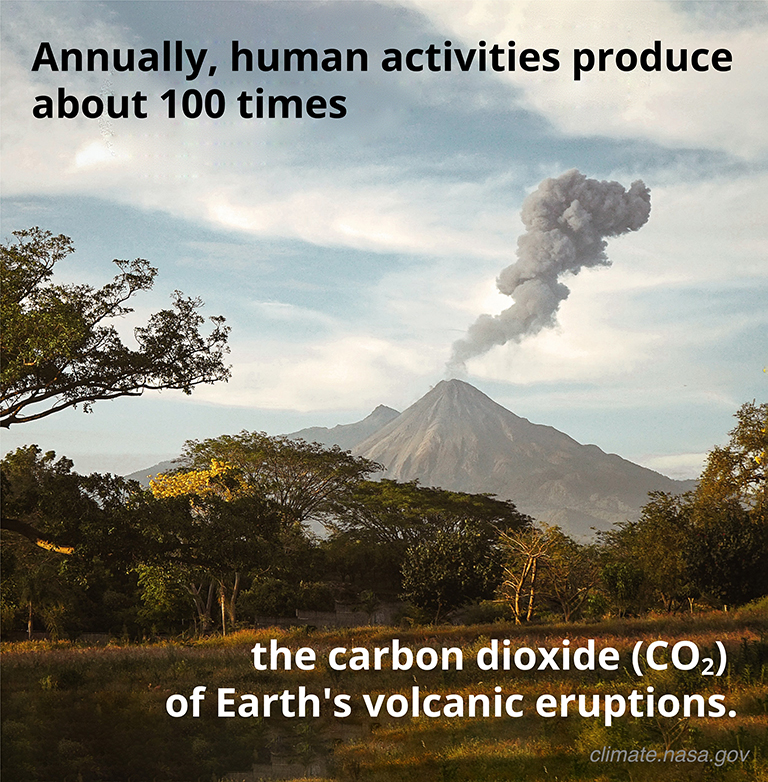What do volcanoes have to do with climate change?

Volcanic eruptions are often discussed in the context of climate change because they release CO2 and other gases into our atmosphere. However, the impact of human activities on the carbon cycle far exceeds that of all the world's volcanoes combined, by more than 100 times.
To put it in perspective, while volcanic eruptions do contribute to an increase in atmospheric CO2, human activities release an amount of CO2 equivalent to what a Mount St. Helens-sized eruption produces every 2.5 hours and a Mount Pinatubo-sized eruption twice daily.
The most significant eruptions come from super volcanoes like Yellowstone or Mount Toba, which erupt very rarely, about every 100,000 to 200,000 years or more. Yet, the total annual CO2 emissions from human activities are akin to one or more Yellowstone-sized super eruptions occurring every year.
In essence, CO2 emissions from human activities greatly surpass those from volcanoes.
Climate scientists mention volcanic eruptions to help us understand and explain short periods of cooling in Earth's history. Approximately every few decades, a volcanic eruption, such as Mount Pinatubo or El Chichón, releases a substantial number of particles and gases. Some of these particles and gases temporarily block enough sunlight to induce a brief global cooling period. While these effects typically dissipate after 1 to 2 years, their impact is felt across the globe.
In comparison, the warming caused by greenhouse gases resulting from human activities, primarily from burning fossil fuels, will persist for millennia.




